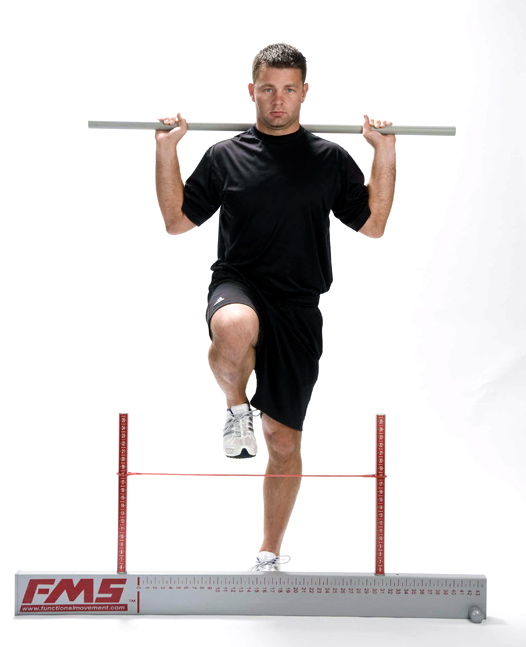MONTREAL - As we age, we lose quality of movement. That’s not the end of the world for the average desk jockey, but for someone who spends several hours a week pushing their body to move faster, higher and stronger, faulty mechanics can take their toll.
Pinpointing exactly what is out of sync takes an experienced eye and the right tools, which means it’s not something that you can self diagnose while looking in a mirror or watching yourself on video. So challenging is the exercise, even qualified trainers struggle to objectively evaluate movement in an athletic environment.
With this in mind, American physical therapist and strength and conditioning guru Gray Cook created a seven-exercise screening tool designed to take the guess work out of where athletes go wrong.
Called the Functional Movement Screen, exercisers perform common athletic movements that are then scored based on the quality of execution. The evaluator checks for symmetry (both sides of the body should have the same strength and range of motion) and functional limitations caused by musculoskeletal weakness, strength imbalances and lack of mobility.
Scott Livingston, athletic therapist and strength and conditioning specialist for many of Canada’s high performance athletes, is a fan of the functional movement screen. He used it extensively when he worked with the Montreal Canadiens, testing every player and red-flagging those who scored poorly.
Like Cook, Livingston believes that a low score reveals an increased potential for injury, even if pain isn’t present. Any player who was found lacking spent extra time in the gym working on improving their movement patterns through a series of corrective exercises.
The exercises involved in the screen look easy. In reality, however, they are deceptively hard to perform and are humbling for even the most skilled athlete. Lowering the hips in a deep squat while raising a bar overhead evaluates the range of motion in the hips, knees, ankles, shoulders and spine. Lifting the heels while the hips descend, a forward leaning torso and failing to hold the dowel steady during all phases of the movement suggest that you have issues that need attention.
Stepping over a knee-high hurdle and bringing the foot back one leg at a time tests the ability to balance and stabilize the body in a one-legged stance and reveals how the left leg functions when compared to the right. And kneeling on a narrow board and lifting the same side leg and arm tests core stability during complex movement, which is something almost everyone struggles to maintain.
Livingston says results obtained from the functional movement screen categorizes athletes into one of four groups; healthy unclean movement, unhealthy (painful) clean movement, unhealthy, unclean movement and healthy clean movement.
Those who move well without pain can handle high-intensity workouts that push the body to perform.
Those who experience pain while performing the screen or fail to execute the exercises properly are not only more prone to injury, they are probably performing well below their potential.
The biggest question mark, however, is what to do with those whose movement is faulty but pain free. Do you fix what doesn’t appear to be broken or do you leave well enough alone?
Livingston believes investing in proper execution is worth the effort. Most athletes are guilty of repeating the same movement patterns over and over again, which if done poorly will eventually result in pain. And when that pain arrives, it takes a long time not just to heal, but to correct movement patterns that have long become ingrained.
That’s not to say that relearning how to move is easy. It’s not. But if you want to continue doing the activities you love well into your later years, a little prevention isn’t a bad idea.
Part of that relearning process is being prescribed a series of individualized corrective exercises that are based on the weaknesses discovered during the Functional Movement Screen.
The final part of the solution is incorporating those exercises into your regular workouts.
That brings us to the other use of the Functional Movement Screen. It’s a great way to track progress and find out whether all of your hard work is paying off. Keep in mind, however, that the screen isn’t designed to be the final say in determining injury risk. It’s just one more tool in a series of tests to help determine the cause of injury and speed healing.
Where can you get a Functional Movement Screen and who is qualified to administer it? Personal trainers, athletic therapists, physical therapists and strength and conditioning specialists are the most likely to be certified though one of Cook’s seminars. And many sports medicine clinics have individuals trained to administer the screen and prescribe the necessary corrective exercises.
The test itself takes about 30-40 minutes and should be accompanied by a discussion of the results and a suggested course of action based on how you performed.
Then it’s up to you to do the work and incorporate your new improved movement patterns into your everyday workouts.
jbarker@videotron.ca
© Copyright (c) The Montreal Gazette






